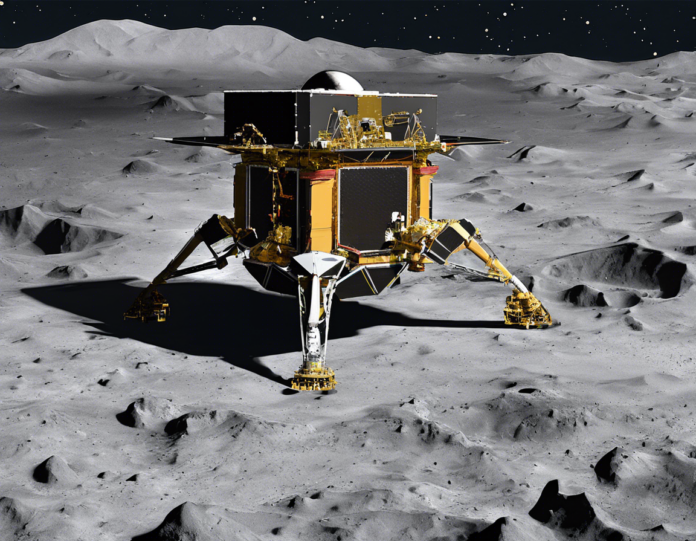After the successful launch of Chandrayaan 1 in 2008 and Chandrayaan 2 in 2019, the Indian Space Research Organization (ISRO) is now gearing up for another lunar mission – Chandrayaan 3. This ambitious endeavor seeks to further expand India’s footprint in space exploration and build upon the learnings from its previous missions. Let’s delve into the details of Chandrayaan 3 and understand what sets it apart from its predecessors.
Chandrayaan 3: A Revamped Mission
Chandrayaan 3 marks a significant milestone in India’s space exploration journey. After the partial success of Chandrayaan 2, which encountered challenges with its lander module, ISRO decided to revamp its lunar mission strategy with Chandrayaan 3. Here are some key aspects that differentiate Chandrayaan 3 from its predecessors:
1. Focus on Lander and Rover Modules
Unlike Chandrayaan 2, which had both orbiter and lander modules, Chandrayaan 3 will solely focus on the lander and rover modules. This strategic shift aims to enhance the efficiency and success rate of the mission by concentrating on the crucial aspects of lunar surface exploration.
2. Redesigned Lander for Improved Landing
One of the primary objectives of Chandrayaan 3 is to address the challenges faced during the landing phase of Chandrayaan 2. ISRO has redesigned the lander module to ensure a smoother and more precise landing on the lunar surface, reducing the risk of mission failure.
3. Collaborative Efforts with NASA
In a pioneering move, ISRO has collaborated with NASA for Chandrayaan 3, leveraging the expertise and resources of both space agencies. This partnership is expected to bring valuable insights and technological support to the mission, nurturing international cooperation in space exploration.
4. Cost-Effective Approach
Chandrayaan 3 follows a cost-effective approach without compromising on the mission’s objectives and scientific goals. By optimizing resources and streamlining the mission structure, ISRO aims to maximize the mission’s impact within a budget-friendly framework.
Chandrayaan 3 Key Objectives
The primary objectives of Chandrayaan 3 encompass a range of scientific goals and technological advancements. Some of the key objectives include:
- Conducting in-depth exploration of the lunar surface through the rover module
- Analyzing lunar soil and geological features to enhance understanding of the Moon’s composition
- Studying lunar craters and topography to unravel the Moon’s history and evolution
- Testing new technologies and landing mechanisms for future lunar missions
- Collaborating with international partners to foster global cooperation in space exploration
FAQs about Chandrayaan 3
To provide further insights into the Chandrayaan 3 mission, here are some frequently asked questions along with concise answers:
1. What is the timeline for the launch of Chandrayaan 3?
ISRO is currently finalizing the launch timeline for Chandrayaan 3, with expectations of a potential launch in the near future. Exact dates will be announced closer to the launch.
2. How will Chandrayaan 3 differ from Chandrayaan 2?
Chandrayaan 3 will focus solely on the lander and rover modules, unlike Chandrayaan 2, which included an orbiter as well. This strategic shift aims to streamline the mission for enhanced efficiency.
3. What are the key collaborations for Chandrayaan 3?
ISRO has collaborated with NASA for Chandrayaan 3, marking a significant partnership in space exploration. This collaboration is expected to bring mutual benefits and advancements to both agencies.
4. What are the scientific goals of Chandrayaan 3?
The scientific goals of Chandrayaan 3 include detailed exploration of the lunar surface, analysis of lunar soil and geological features, study of lunar craters, testing of new technologies, and fostering international cooperation.
5. How does Chandrayaan 3 contribute to India’s space exploration ambitions?
Chandrayaan 3 contributes to India’s space exploration ambitions by expanding its lunar mission capabilities, fostering technological innovations, and establishing collaborative partnerships with global space agencies.
Through Chandrayaan 3, India is poised to embark on a new chapter in its space exploration journey, demonstrating its commitment to scientific advancement and technological prowess. With a revamped mission strategy, strategic collaborations, and cost-effective approach, Chandrayaan 3 holds the promise of unlocking new discoveries and insights about the Moon, further elevating India’s stature in the realm of space exploration.
